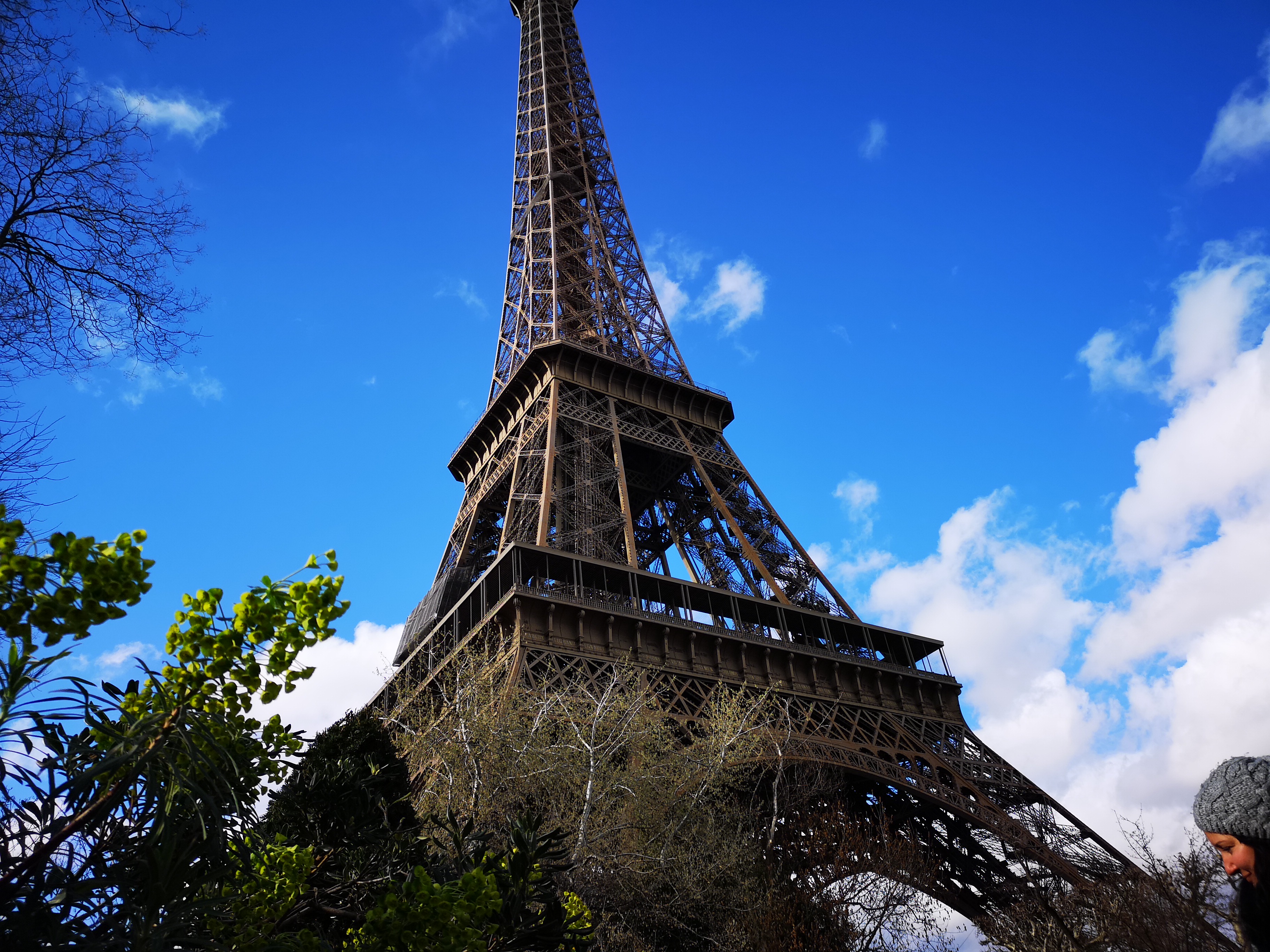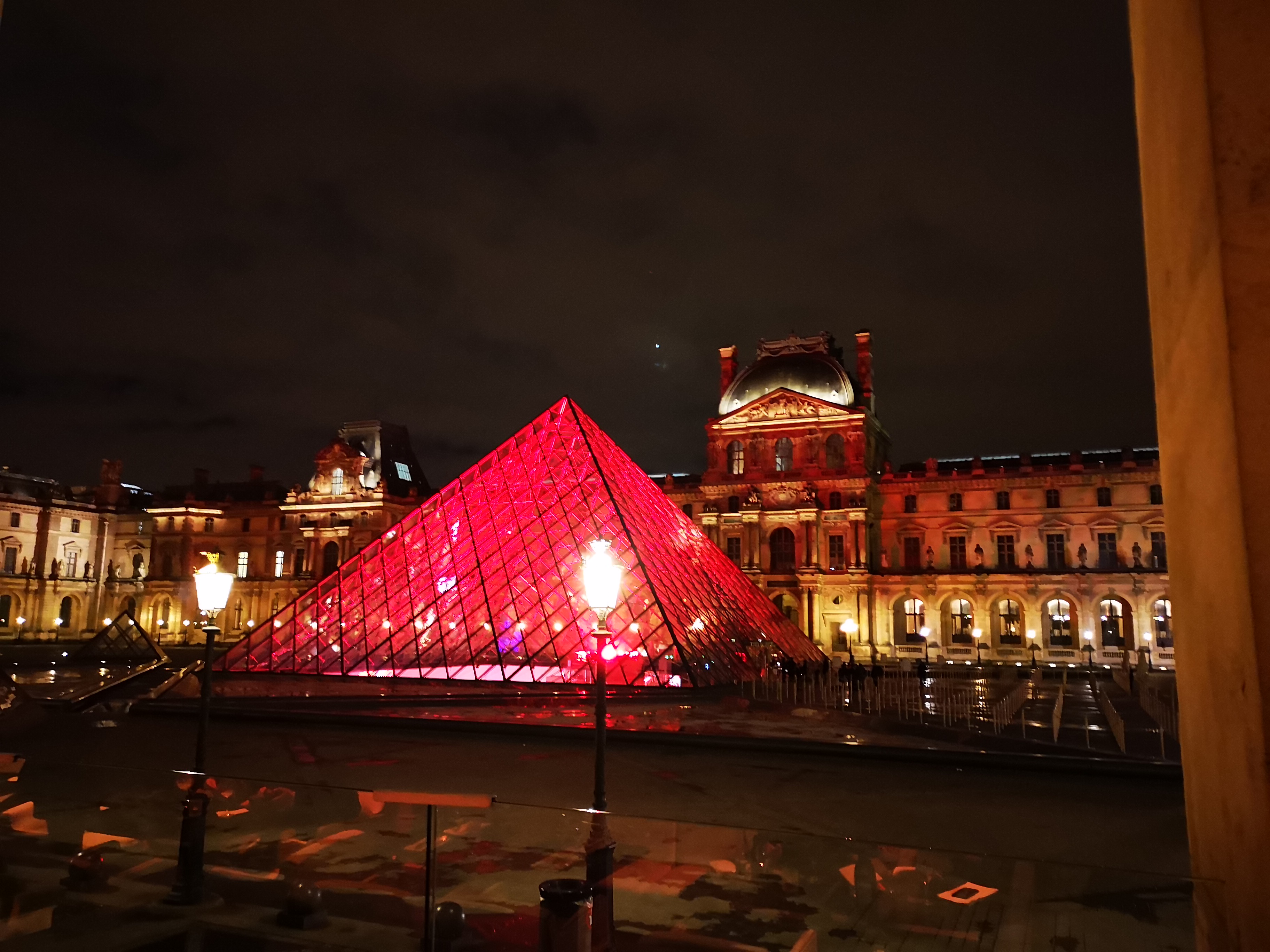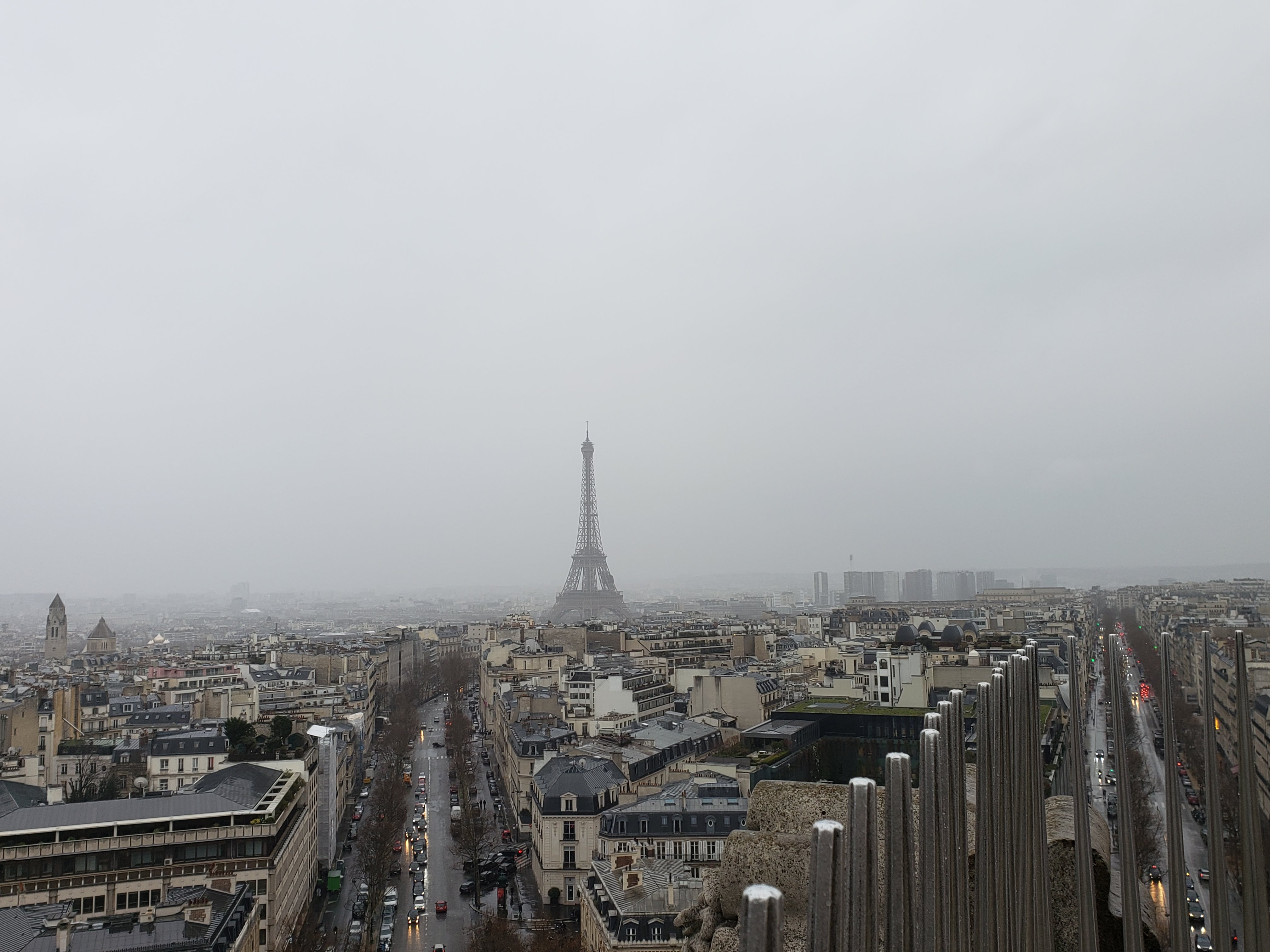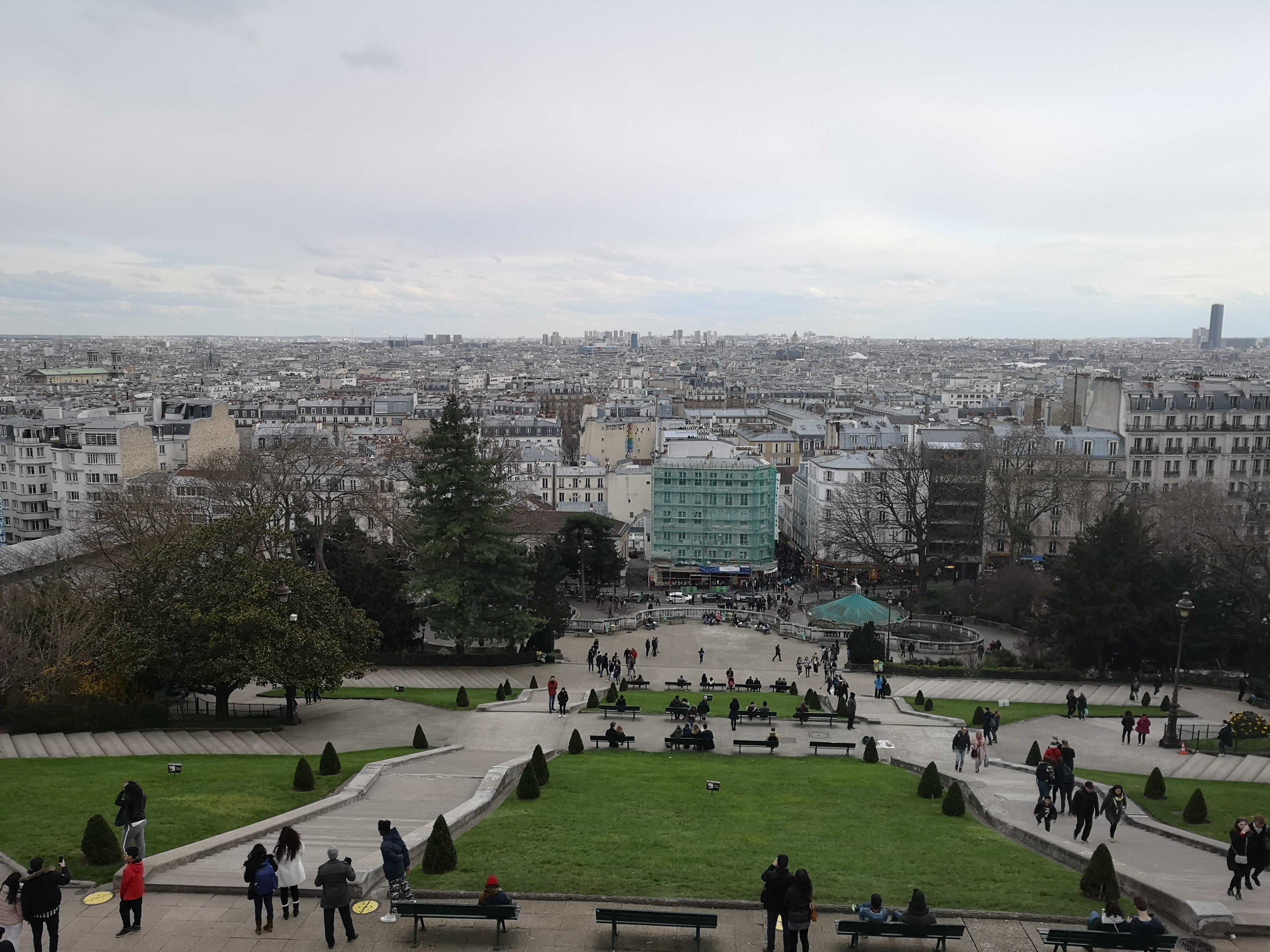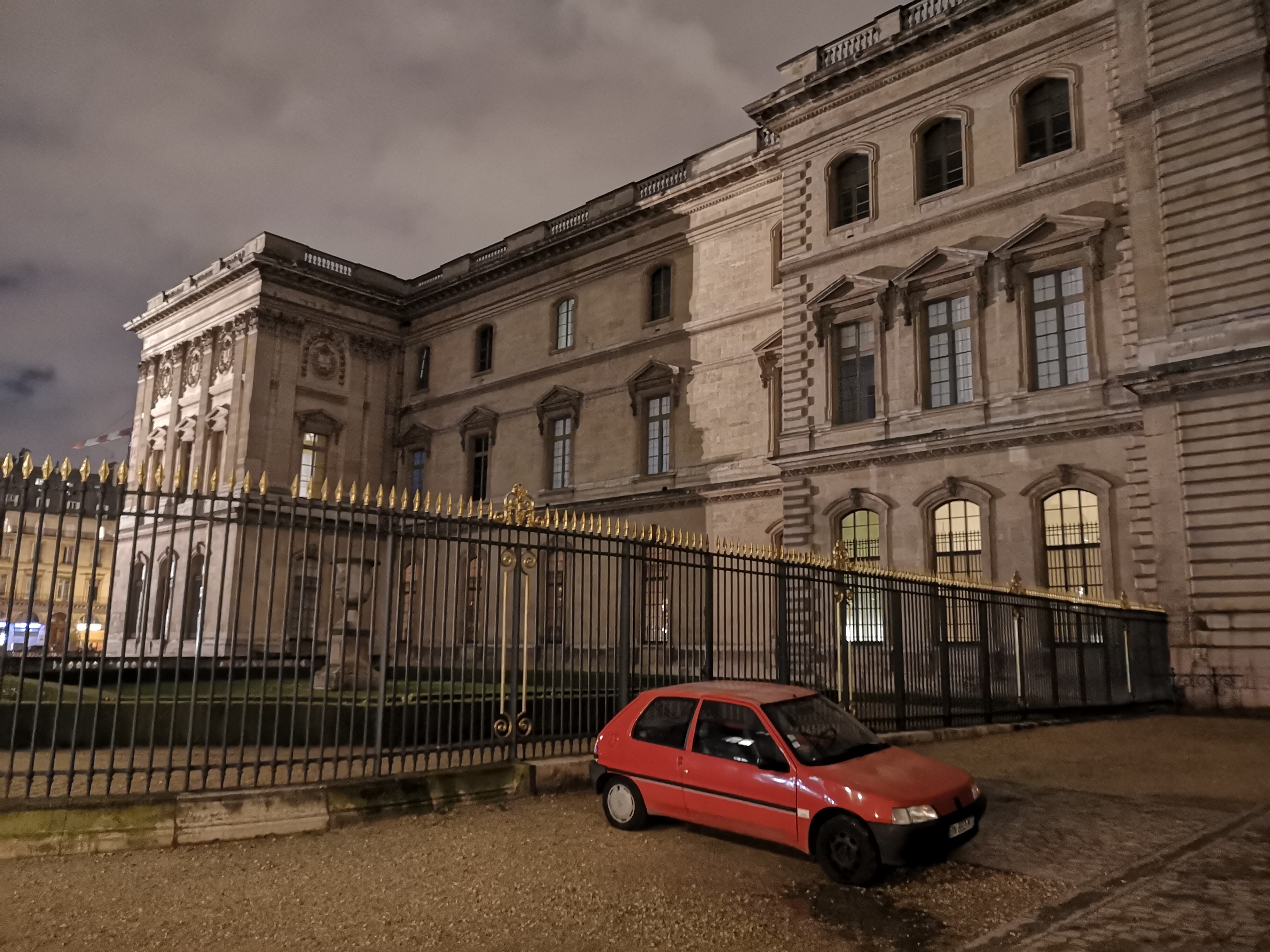
The Pros
- Long lasting battery
- Night mode is great
- Loud speaker
The Cons
- Bloatware apps
- Possible high price
- Camera bump
Huawei isn’t a well-known name brand in Canada.
While the Chinese company officially launched its first phone in Canada only last year, Huawei also saw success with the Google Nexus 6P in the Canadian market.
After using Huawei’s Mate 10 Pro and the P10 Plus for the past several months, I recently got the opportunity to spend time with the company’s latest smartphone, the P20 Pro. Since I received the phone on March 27th, I’ve used it as my daily driver and I have to say I like this handset a lot more than Huawei’s previous smartphones.
The P20 Pro is a powerful successor to the P10 Plus, featuring a sleek design, remarkable camera and exemplary battery performance.
Huawei P10 Plus
Huawei P20
Huawei P20 Pro
Display
5.5-inch, WQHD display, 1440 x 2560 pixels, 16:9 aspect ratio
5.8-inch, LCD display, 1080 x 2244 pixels, 18.5:9 aspect ratio
6.1-inch AMOLED display, 1,080 x 2,240 pixels, 18.5:9 aspect ratio
Processor
Kirin 960
Kirin 970
Kirin 970
RAM
4GB of RAM
4GB of RAM
6GB of RAM
Storage
64GB
128GB
128GB
Dimensions (in.)
153.5 x 74.2 x 6.98 mm
149.1 x 70.8 x 7.7 mm
155 x 73.9 x 7.8mm
Weight
165g
165g
174g
Rear Facing Camera
20-megapixel + 12-megapixel (OIS)
12-megapixel (f/1.8, OIS, AIS) + 20-megapixel (f/1.6, AIS)
40-megapixel (f/1.8, OIS, AIS) + 20-megapixel (f/1.6) + 8-megapixel (f/2.4)
Front Facing Camera
8-megapixel (f/1.9)
24-megapixel (f/2.0)
24-megapixel (f/2.0)
OS
Android 7.0 Nougat
Android 8.1 Oreo
Android 8.1 Oreo
Battery
3,750mAh
3,400mAh battery
4,000mAh
Network Connectivity
GSM/HSPA/LTE
GSM/HSPA/LTE
GSM/HSPA/LTE
Sensors
Accelerometer, gyro, proximity, compass
Fron Fingerprint Sensor, Accelerometer, Gyro Sensor, Proximity Sensor, Compass
Fingerprint Sensor (front-mounted), Gyro Sensor, Proximity Sensor, Accelerometer, Compass
SIM Type
nano SIM
Nano SIM
Nano SIM
Launch Date
February 26, 2017
March 27, 2018
March 27, 2018
Misc
Colours: black | USB Type-C, not water resistant, NFC. is available through Canadian carriers.
Colour: Black, Blue, Pink Gold | Bluetooth 4.2, IP53 water and dust resistant
Notched display, Colour: Black, Blue, Twilight, Pink Gold | Bluetooth 4.2, IP67 water/dust resistant
Display
Huawei P10 Plus
5.5-inch, WQHD display, 1440 x 2560 pixels, 16:9 aspect ratio
Huawei P20
5.8-inch, LCD display, 1080 x 2244 pixels, 18.5:9 aspect ratio
Huawei P20 Pro
6.1-inch AMOLED display, 1,080 x 2,240 pixels, 18.5:9 aspect ratio
Processor
Huawei P10 Plus
Kirin 960
Huawei P20
Kirin 970
Huawei P20 Pro
Kirin 970
RAM
Huawei P10 Plus
4GB of RAM
Huawei P20
4GB of RAM
Huawei P20 Pro
6GB of RAM
Storage
Huawei P10 Plus
64GB
Huawei P20
128GB
Huawei P20 Pro
128GB
Dimensions (in.)
Huawei P10 Plus
153.5 x 74.2 x 6.98 mm
Huawei P20
149.1 x 70.8 x 7.7 mm
Huawei P20 Pro
155 x 73.9 x 7.8mm
Weight
Huawei P10 Plus
165g
Huawei P20
165g
Huawei P20 Pro
174g
Rear Facing Camera
Huawei P10 Plus
20-megapixel + 12-megapixel (OIS)
Huawei P20
12-megapixel (f/1.8, OIS, AIS) + 20-megapixel (f/1.6, AIS)
Huawei P20 Pro
40-megapixel (f/1.8, OIS, AIS) + 20-megapixel (f/1.6) + 8-megapixel (f/2.4)
Front Facing Camera
Huawei P10 Plus
8-megapixel (f/1.9)
Huawei P20
24-megapixel (f/2.0)
Huawei P20 Pro
24-megapixel (f/2.0)
OS
Huawei P10 Plus
Android 7.0 Nougat
Huawei P20
Android 8.1 Oreo
Huawei P20 Pro
Android 8.1 Oreo
Battery
Huawei P10 Plus
3,750mAh
Huawei P20
3,400mAh battery
Huawei P20 Pro
4,000mAh
Network Connectivity
Huawei P10 Plus
GSM/HSPA/LTE
Huawei P20
GSM/HSPA/LTE
Huawei P20 Pro
GSM/HSPA/LTE
Sensors
Huawei P10 Plus
Accelerometer, gyro, proximity, compass
Huawei P20
Fron Fingerprint Sensor, Accelerometer, Gyro Sensor, Proximity Sensor, Compass
Huawei P20 Pro
Fingerprint Sensor (front-mounted), Gyro Sensor, Proximity Sensor, Accelerometer, Compass
SIM Type
Huawei P10 Plus
nano SIM
Huawei P20
Nano SIM
Huawei P20 Pro
Nano SIM
Launch Date
Huawei P10 Plus
February 26, 2017
Huawei P20
March 27, 2018
Huawei P20 Pro
March 27, 2018
Misc
Huawei P10 Plus
Colours: black | USB Type-C, not water resistant, NFC. is available through Canadian carriers.
Huawei P20
Colour: Black, Blue, Pink Gold | Bluetooth 4.2, IP53 water and dust resistant
Huawei P20 Pro
Notched display, Colour: Black, Blue, Twilight, Pink Gold | Bluetooth 4.2, IP67 water/dust resistant
Alluring Design 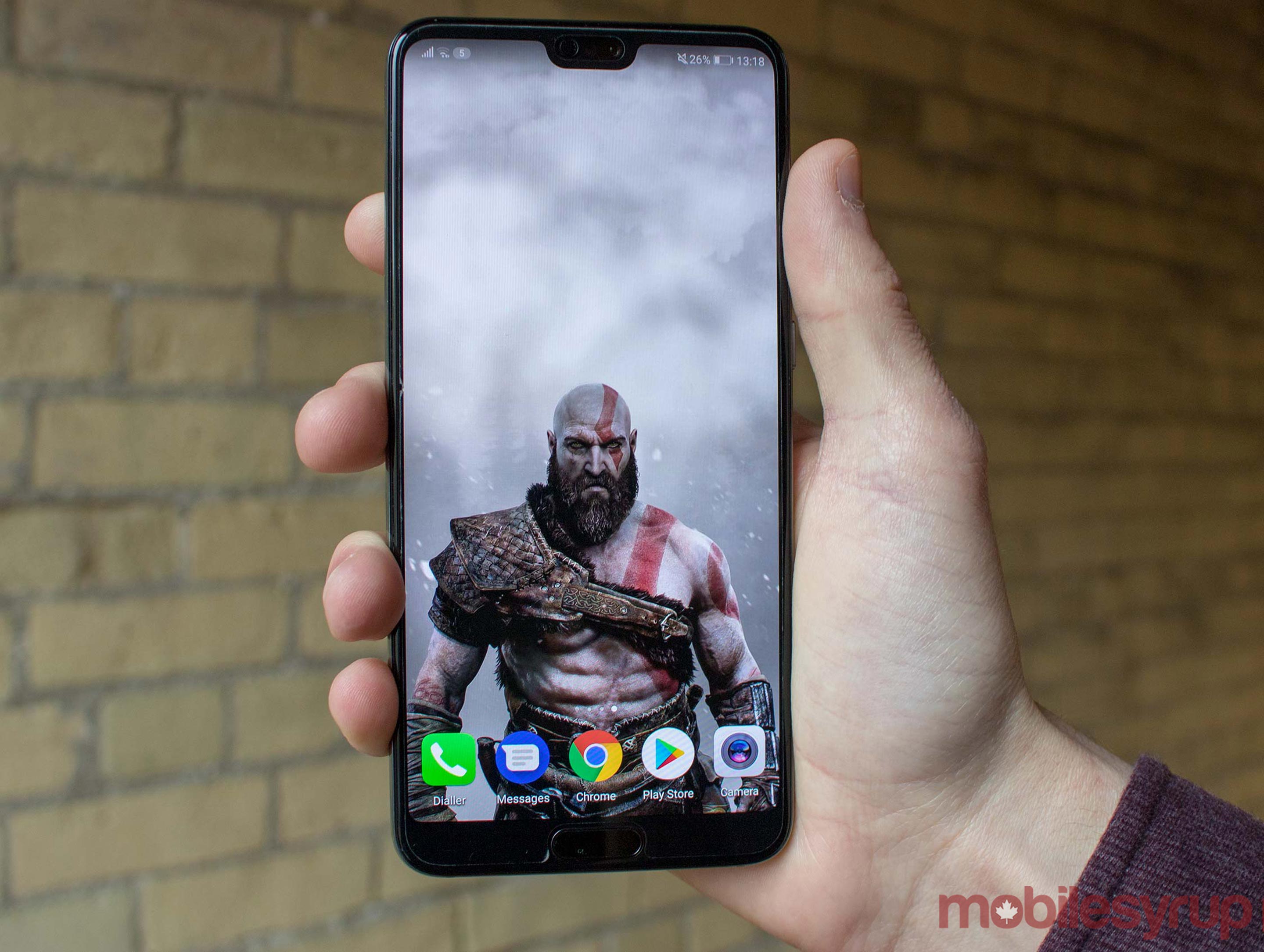
The Huawei P20 Pro offers a slim and compact design, especially when you take its 6.1-inch OLED display into consideration. Measuring in at 7.8mm, the phone isn’t the slimmest device on the market, though it’s also far from being the thickest — I’m looking at you Sony Xperia XZ2 Compact. The phone is slightly slimmer than the Samsung Galaxy S9 and barely slimmer than the Pixel 2 XL.
Despite its slim profile, the P20 Pro definitely doesn’t feel small. This is due to the fact that the phone weighs 180g, making it heavier than the Pixel 2 XL, OnePlus 5T, Mate 10 Pro and iPhone X. That said, the noticeable weight made the P20 Pro feel durable.
The Huawei P20 looks extravagant. Its near bezel-less design combined with a thin iPhone X-style notch give it a model-esque appearance.
The only thing that takes away from the phone’s look is its bottom bezel, which features a front-facing fingerprint scanner. While I liked the utility of the P20 Pro’s fingerprint scanner, it takes away from the phone’s overall artful appearance.
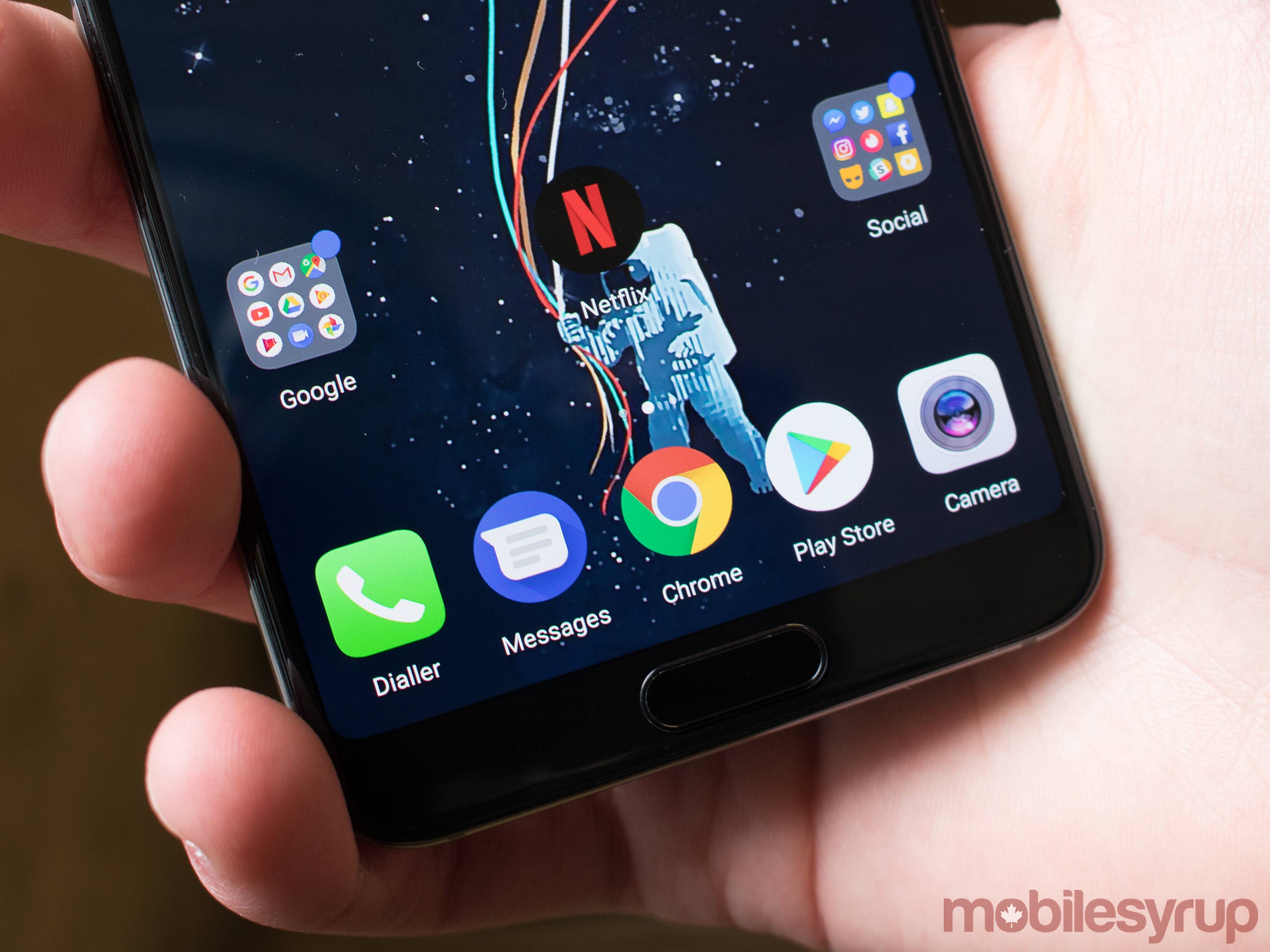
Functionally, the fingerprint scanner is great. It unlocks the phone quickly, with rarely any false reads. Further, the fingerprint scanner supports gestures, which lets the sensor do double duty as a home, overview and back button.
It’s also unique. Recently we’ve seen smartphone manufacturers like Samsung and HTC move their fingerprint scanners to the back of their flagship devices to accommodate bezel-less displays. Huawei’s decision to keep the P20 Pro’s fingerprint scanner at the front of the device helps it stand out in an ocean of copycats.
During its unveiling of the P20 series, Huawei emphasized how important symmetry is to the design of the P20 Pro. It’s that symmetry that helps with the allure of the smartphone.
The phone’s bottom is also symmetrical, with the P20 Pro’s USB Type-C port flanked by two speakers and antenna bands.
The P20 Pro is not all symmetrical lines, however. The right side of the device has a power button and a volume rocker. Meanwhile, the left side of the device features the phone’s dual-SIM tray (in Canada the phone will have a single SIM tray). Lastly, the top includes an infrared blaster, one of my favourite features as it allows me to easily turn on my TV and change the channel with my phone.
Flipping the phone on its back reveals its most notable feature, a triple camera setup — as well as a fingerprint magnet glass surface. The rear camera setup has a noticeable camera bump that’s quite pronounced and prevents the phone from lying down flat.
Favourable display
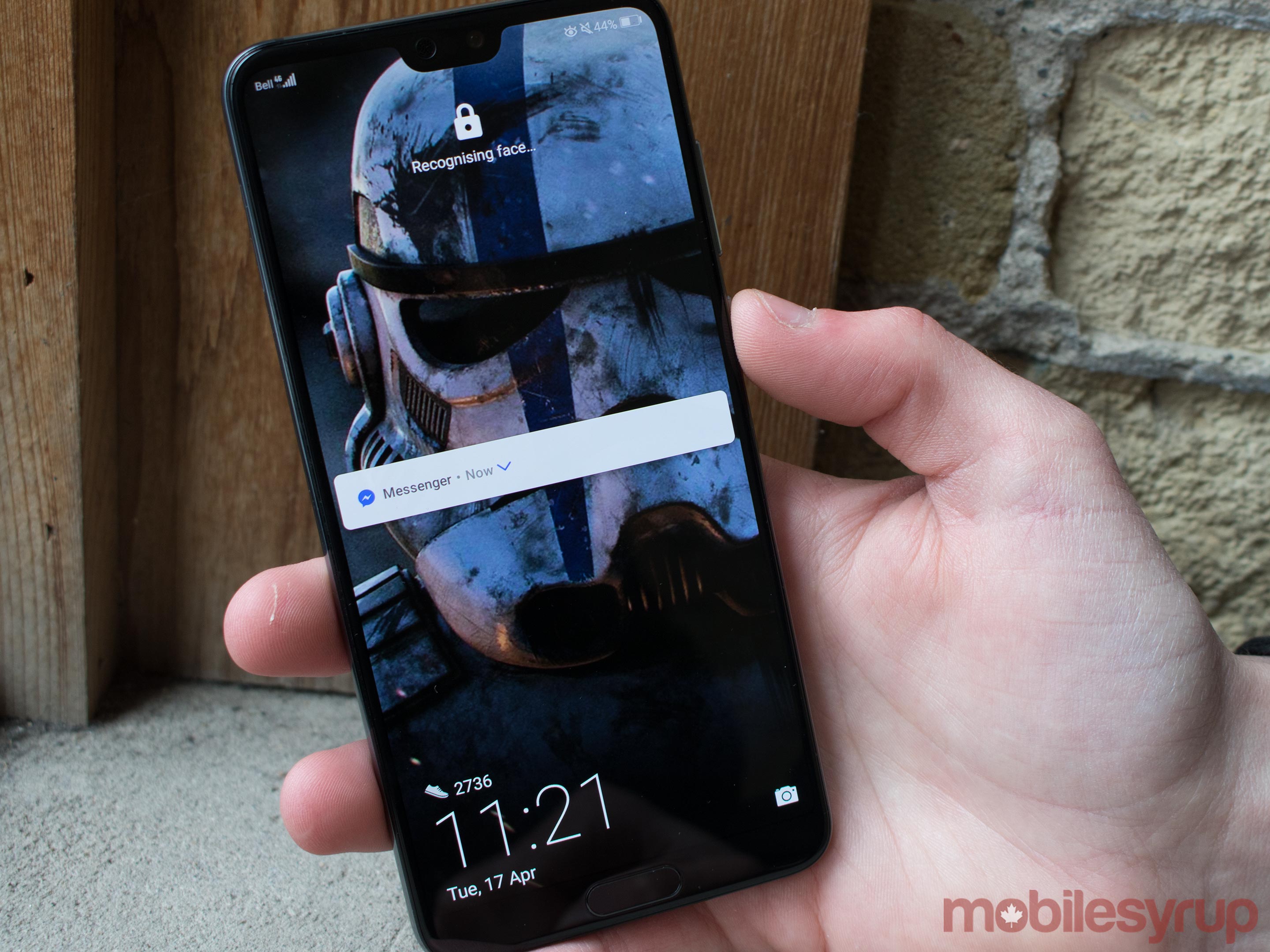
The Huawei P20 Pro features a stellar display.
The phone challenges even the Samsung Galaxy S9 and iPhone X which both have a higher pixel resolution and pixel density. Colours pop on the P20 Pro’s screen and with the flip to natural lighting in the settings menu it gets rid of the slight blue tinge seen on the Pixel 2 XL.
In the P20 Pro settings, users can customize the phone to their liking. The settings menu offers a full range of display colour options, allowing users to “adjust colour style and temperature based on personal preferences.” Also included is an eye comfort mode to filter our blue light for a better nighttime reading experience.
With the P20 Pro’s display, blacks and whites are as bright and dark as they’re supposed to be, and there is no noticeable light bleed or ghosting. Moreover, unlike the Pixel 2 XL, there’s no blue tinge when viewing the device from certain angles.
As for the notch, I rarely noticed it. However, Huawei gives users the option to get rid of the notch if they choose to. When watching videos on Youtube, Netflix or using certain other apps, the phone will fill in the top of the display with black, getting rid of the handset’s notch.
Speaking of YouTube and Netflix videos, the P20 lacks support for HDR10 and Dolby Vision, but that didn’t prevent videos from looking great.
Exemplary Camera
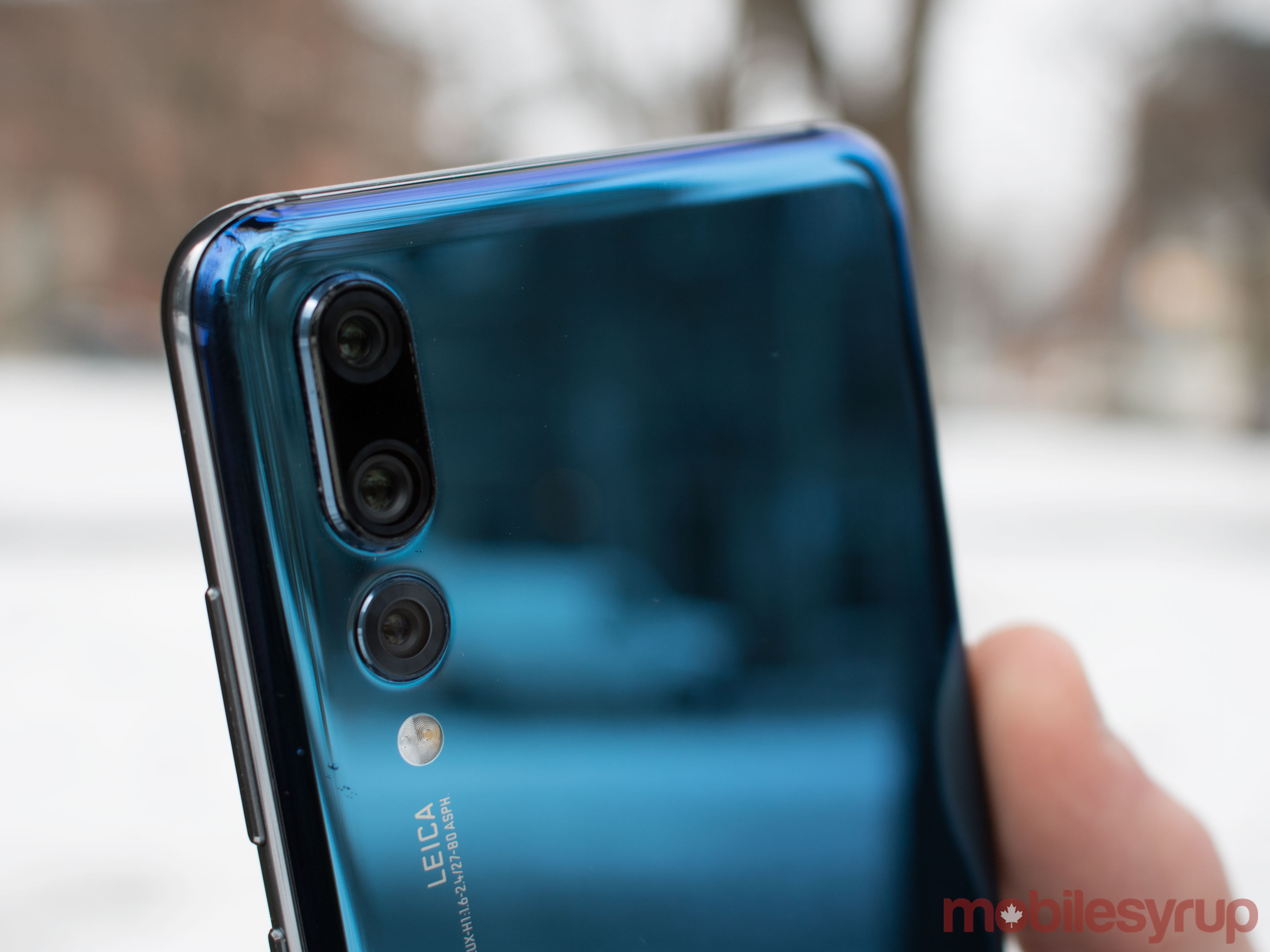
The P20 Pro features the world’s first ever triple rear camera setup. While odd looking, the phone’s array of cameras offer an awesome experience.
The camera’s best feature is night mode. Night mode keeps the camera shutter open for a full four seconds, allowing nighttime snaps to collect enough light. During this time, the P20 Pro manages to reduce blurriness, making images sharper and reducing noise with the help of the P20 Pro’s large 1/1.7-inch camera sensor.
Besides night mode, the phone’s natural camera mode is also pretty spectacular. The camera’s AI can recognize 19 different scenes and subjects and adapt accordingly. When taking the picture below, the phone saw the Eiffel Tower among the blue sky and went into ‘blue sky’ mode to make blue more vibrant, while pictures I took of flowers made the pinks pop.
Additionally, the P20 Pro includes a slow-motion mode that allows users to capture six seconds of video at 960 frames per second at 720p, similar to the Samsung Galaxy S9. It also has an aperture mode that allows users to adjust how much depth of field blur is in their pictures.
Moreover, the portrait mode works great, accentuating the subject while blurring the background — though not to the point where the background is unrecognizable. There’s also a pro mode that allows users to adjust ISO, shutter speed, exposure compensation and autofocus settings.
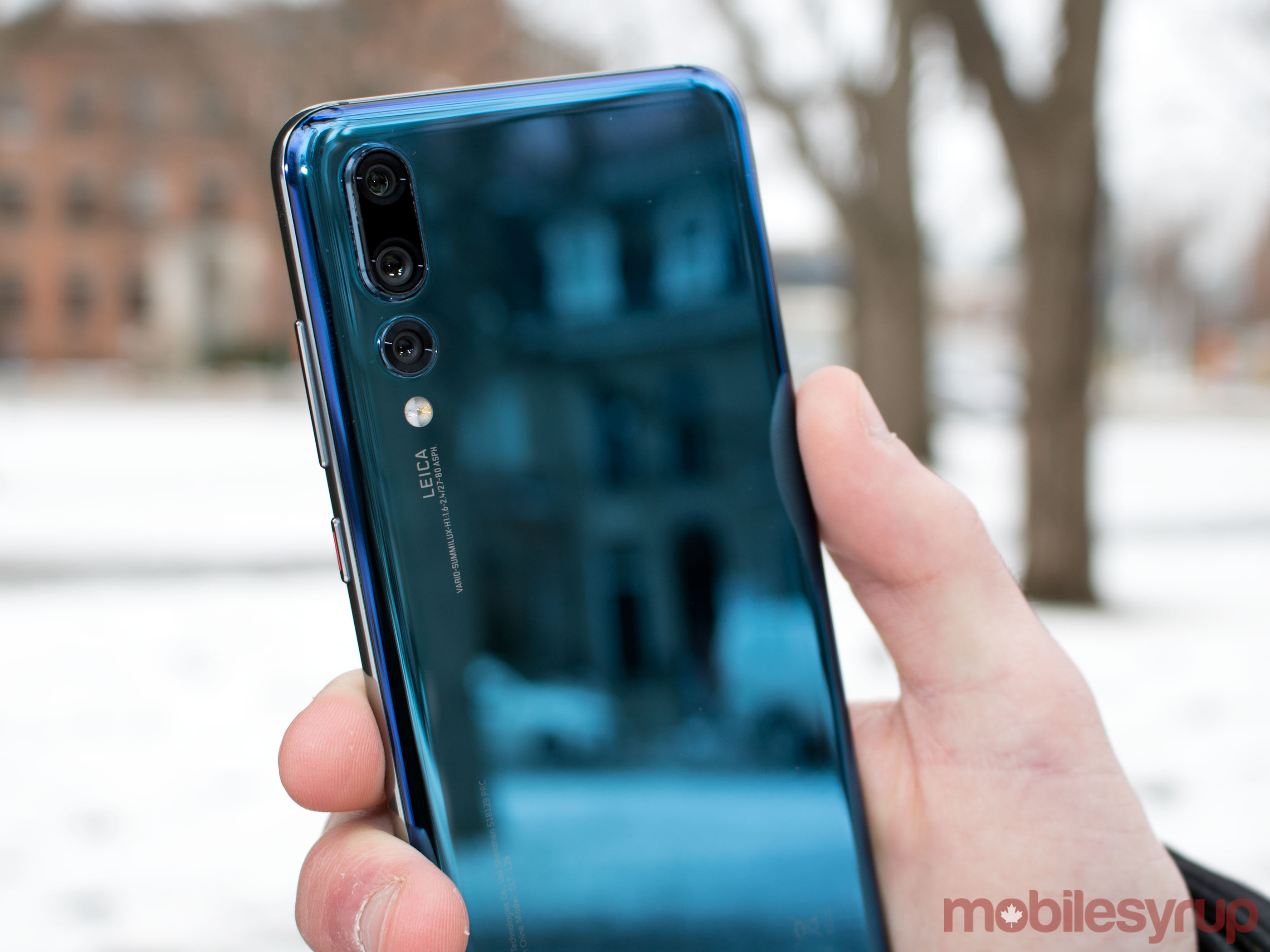
The front-facing camera, on the other hand, features a 24-megapixel sensor that takes clear selfies. You can also adjust the lighting and the beautification settings which blurs the blemishes on your face.
The camera also does a good job at creating a depth-of-field bokeh effect, blurring out the background and making you the focal point.
Power machine
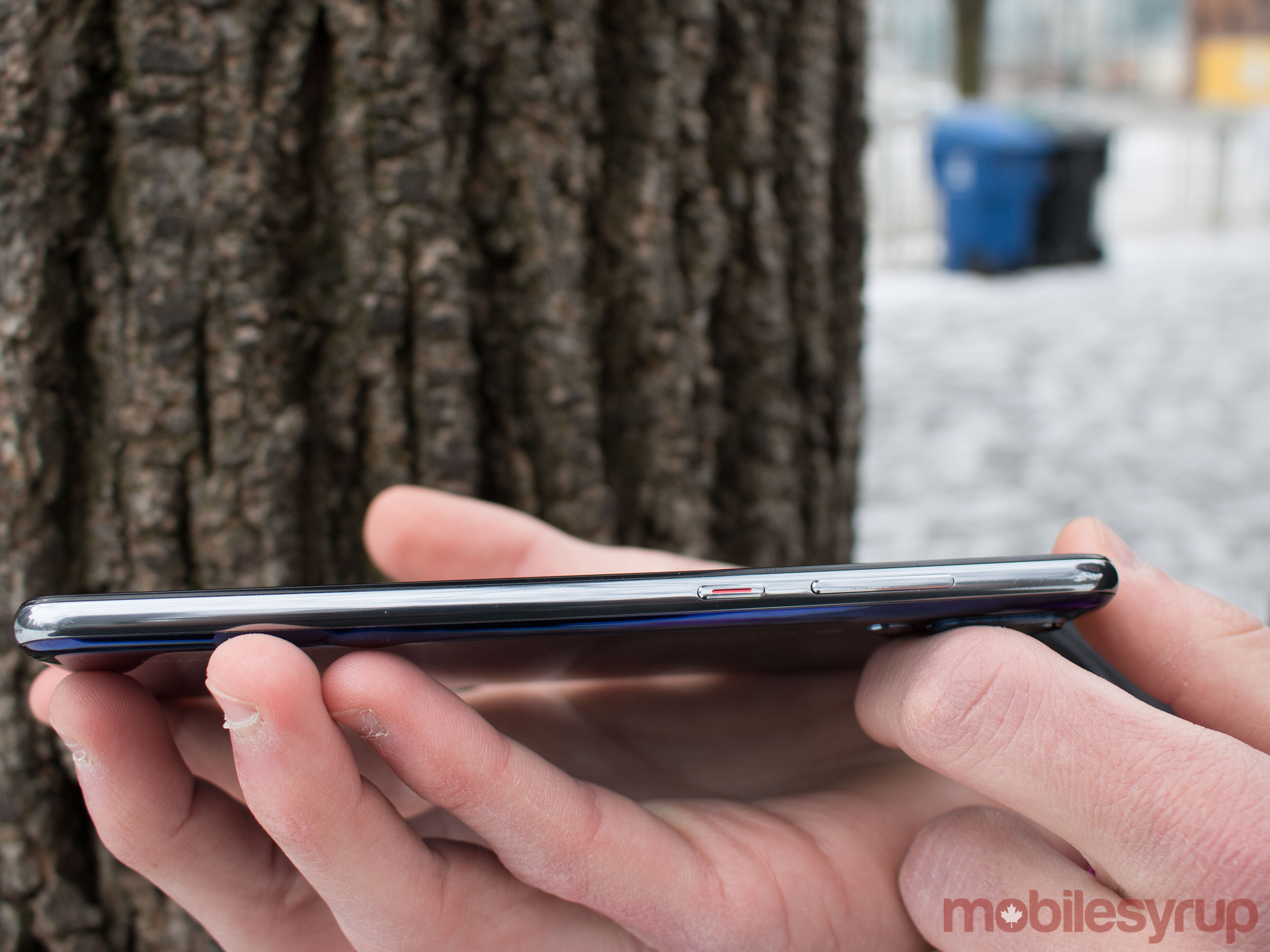
The P20 Pro is powered by a Kirin 970 chipset that never slows down or causes apps to crash. Netflix, YouTube, Google Chrome and games — I played Lil’ Alchemist and Plague Inc. on the device — all run smoothly, with no lag.
Benchmarking the device, the phone scored similarly to the Huawei Mate 10 Pro, with a single core score of 1911 and a multi-core score of 6765. In contrast to the Samsung Galaxy S9+, which features a Snapdragon 845 chipset, the P20 Pro didn’t hold up too well. In comparison, the S9+ earned a score of 2072 and a multi-core score of 8357.
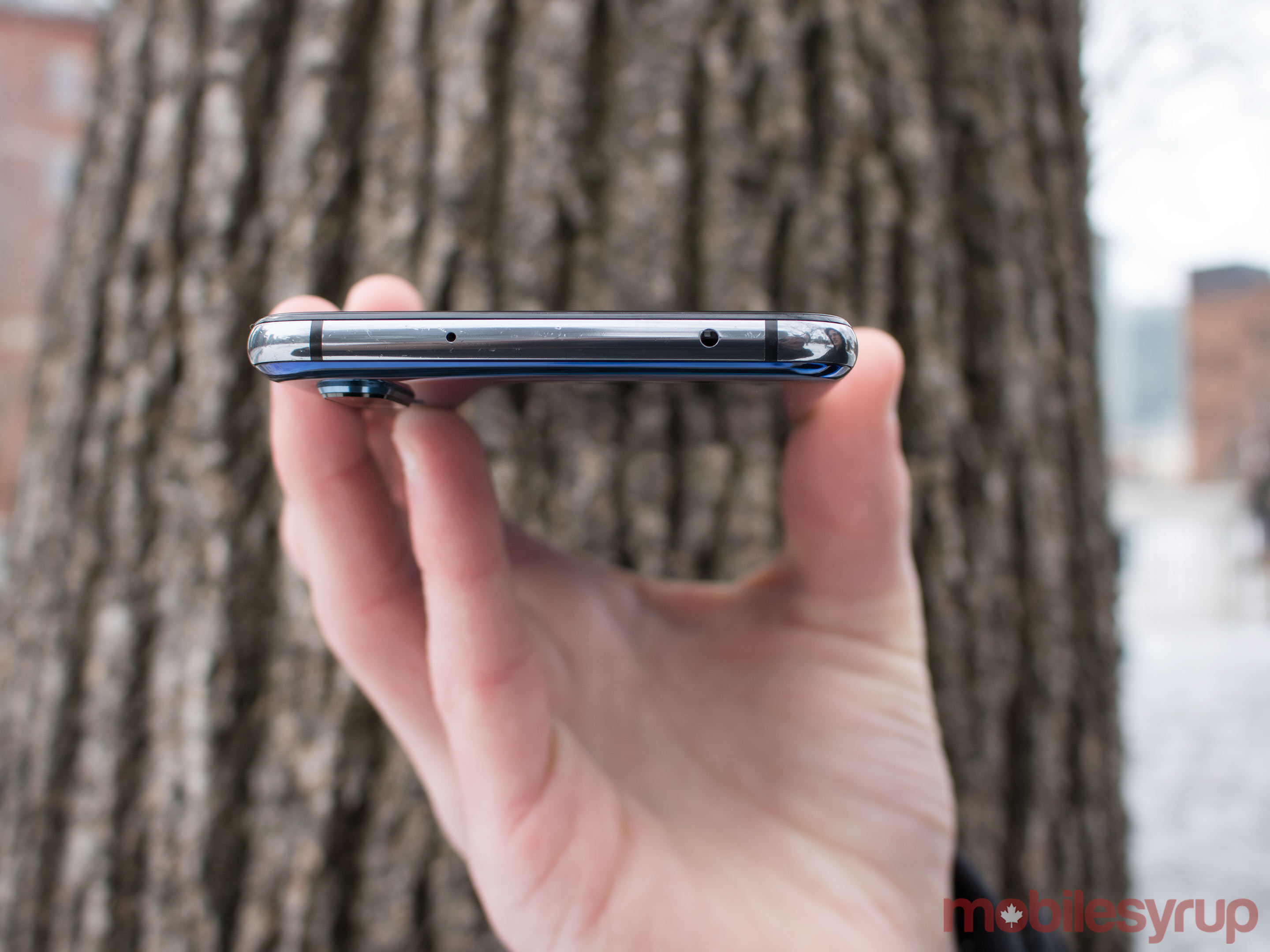
But even with a lesser score, the P20 Pro was able to function as my desktop for three hours. The phone’s Easy Projection allowed me to connect the P20 Pro to a monitor and use it as a desktop PC replacement. In comparison, the Samsung Galaxy S8 and S9 require pricey DeX dock to do the exact same thing.
The experience isn’t without its issues, however. With the Easy Projection mode, users only have access to apps that are available through the Play Store and not everything functions exactly as it should. While the Huawei Calendar app and Google Chrome worked without any hiccups, apps like Slack experienced issues. This mode also consumes a lot of battery. My phone went from about 60 percent to zero within three hours, a drain that would never happen otherwise.
However, even with that being the case, the P20 Pro did a satisfactory job at replacing my laptop as long as it could survive.
Day-long battery and it’s so loud
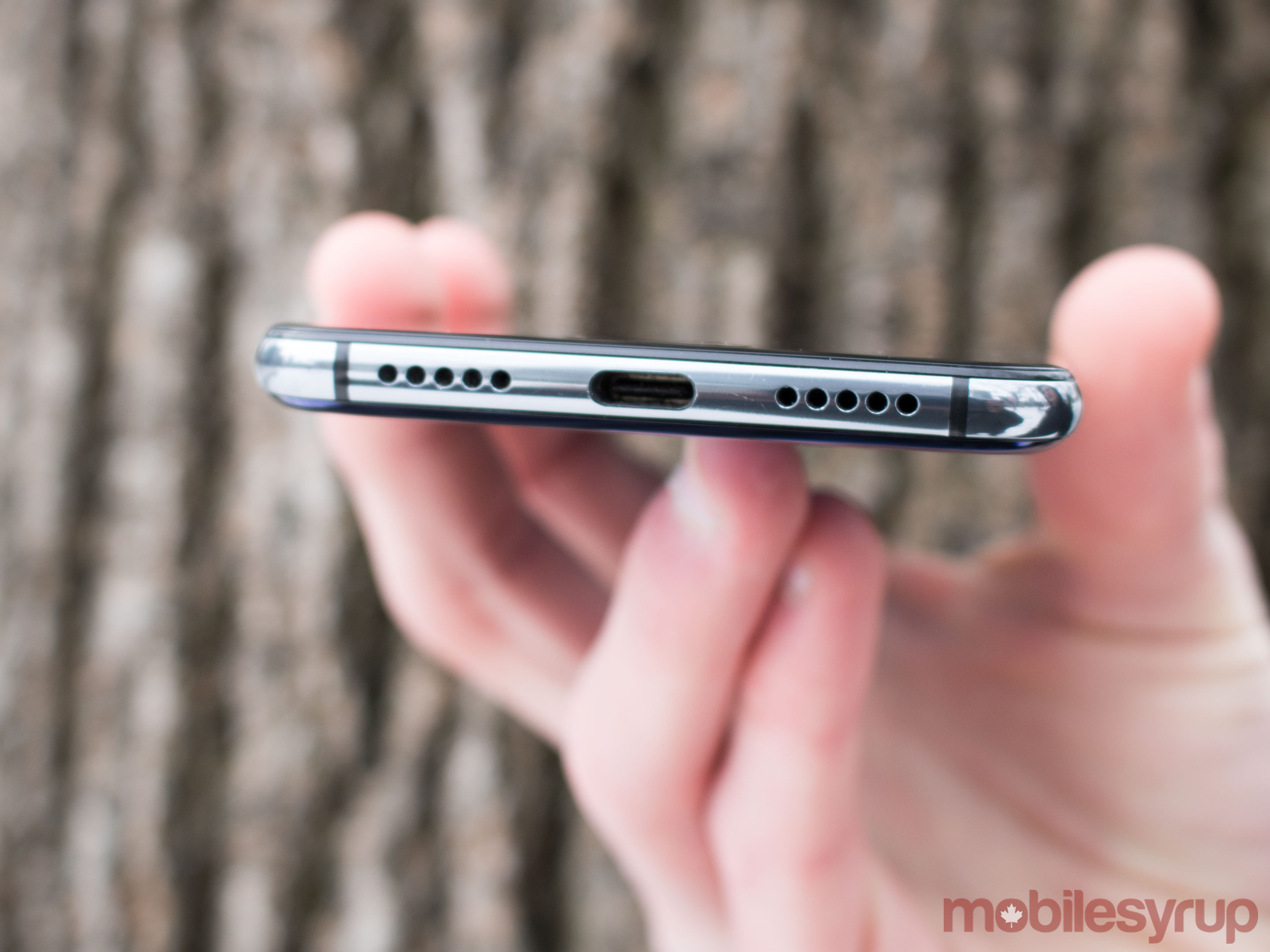
Speaking of battery, the phone can easily last longer than 24 hours, with my longest measured run coming in at 28 hours. That session included one hour and 23 minutes of Plague Inc., a full episode of American Dad, which comes in at 22 minutes, and in total five hours and 41 minutes of screen time.
Without so much gaming, the phone would have survived quite a bit longer. And in terms of temperature, the phone’s battery never reached a temperature warmer than 34-degrees Celsius.
The P20 Pro also features Dolby Atmos support combined with stereo speakers. This combination ends up equaling a boisterous sound that can be heard clearly from several feet away. In fact, my mother could clearly listen and laugh along to an episode of The Mindy Project I was watching while nearly five feet away and in another room.

The P20 Pro’s sound is clear, with no instances of tinniness or hollowness. Its bass is deep and its treble features high frequencies that at times can even be ear-splitting depending on what exactly you’re listening to. In other words, this is one loud device.
Huawei’s flagship also lacks a headphone jack. However, with using the USB Type-C headphones that came with the device, the phone was equally as loud and clear as using the phone’s speakers.
The Huawei user interface
The P20 Pro features Huawei’s EMUI 8.1 skin which sits on top of Android 8.0 Oreo. EMUI is full of bloatware apps, some of which are copies of Google apps — it also wants you to create and log into a Huawei account.
However, the skin is also full of customization and includes some useful functionality not available on other Android devices.

For example, with EMUI, users can set an application lock. This prevents anyone from just going into your messages or your Instagram. Not many phones have this feature as it isn’t a standard Android feature. In addition, the P20 Pro has the ability to use two copies of the same app simultaneously. Similar to Samsung’s line of devices, the P20 Pro can allow users to download a copy of an app and have two accounts on the go.
The phone also includes a wide range of ‘smart accessibilities,’ a translator app — an app that can translate spoken language as well as written languages — and a smart controller app that uses the phone’s IR blaster. Another feature the phone has, possibly my favourite, is its Face Unlock.
Face Unlock works very quickly. As soon as I look at the device, it unlocks. It doesn’t matter if I’m wearing a hat or my glasses, the phone always recognizes my face even with low or off lighting. While I cannot say if it’s definitively better, it feels a lot faster than the OnePlus 5T and the Samsung Galaxy S9. It also took less than a minute to set up.
I remember being excited and curious when leaks of the P20 Pro first started to appear. That wasn't something I felt about either the Galaxy S9, the OnePlus 5T or even the Google Pixel 2 XL. This is a feeling I haven't experienced since the HTC U11, which featured unique software, and the Essential Phone, a smartphone that held so much promise.
Huawei didn't let me down. The phone is slick, powerful, offers a long-lasting battery and features the first ever triple rear camera. The P20 is a worthwhile successor to the P10 and an even more worthy competitor to the Samsung Galaxy S9 and iPhone X.
The problem with the Huawei P20 Pro is that we don't have the phone's Canadian price tag yet. If the 899€ cost is equivalent to what the phone will be priced in Canada, which amounts to about $1400 CAD, I'd call the P20 Pro overpriced. It's hard to say whether the P20 Pro is overpriced, but there are more reasonably priced, almost as good handsets out there. However, it might be worth $1250 to $1,300, if it ends up priced in line with the iPhone X.
Update:18/04/2018: The Huawei P20 Pro does not have expandable memory.
But for a top of the line Android phone, it definitely makes sense that it gets top of the line pricing.
MobileSyrup may earn a commission from purchases made via our links, which helps fund the journalism we provide free on our website. These links do not influence our editorial content. Support us here.

